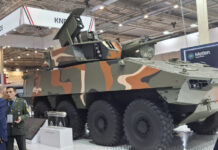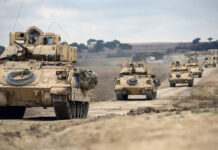Applications For Western Armies
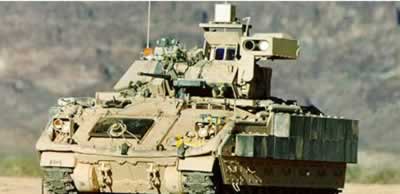
In western armies, countermeasures rely mainly on deployment of smoke screen, and, to some extent, on IR countermeasures. Smoke which enable the tank to perform evasive maneuvers to counter the threat. Since 1991, as lessons learned from Desert Storm, some platforms received electro-optical (IR) jammers. The US Army fitted the Loral VLQ-6 Missile Countermeasures Device (MCD) also known as HardHat, that just missed the 1991 war, and later bought the Sanders VLQ-8As, equipping M-1A1 Abrams MBTs and M-2/3 Bradley AIFVs.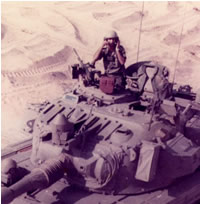 The MCD is used as a part of a comprehensive warning and threat response ECM system, which detects and intercepts laser signals indicating an imminent attack. The system then emits IR signals to disrupt the threat’s missile/command unit tracking loop. MCDs are typically mounted high above the turret and scan the frontal arc to detect and decoy away most of the widely used ATGMs. The system is also integrated with the M6 countermeasure device which launch smoke and flares. A similar concept was developed in Israel by IMI – The Violin Mk1 (shown on left photo) and Violin Mk 2 were deployed as follow-on protection to IR flares that were used as ATGM decoys. These protection devices were proven effective in combat, protecting both stationary and mobile assets.
The MCD is used as a part of a comprehensive warning and threat response ECM system, which detects and intercepts laser signals indicating an imminent attack. The system then emits IR signals to disrupt the threat’s missile/command unit tracking loop. MCDs are typically mounted high above the turret and scan the frontal arc to detect and decoy away most of the widely used ATGMs. The system is also integrated with the M6 countermeasure device which launch smoke and flares. A similar concept was developed in Israel by IMI – The Violin Mk1 (shown on left photo) and Violin Mk 2 were deployed as follow-on protection to IR flares that were used as ATGM decoys. These protection devices were proven effective in combat, protecting both stationary and mobile assets.
However, in combat operations where threats were unexpected, MCD systems would not provide optimal protection, as they are effective only against specific threats. Furthermore, deception techniques divert the incoming missile from the intended target, but do not destroy it. Missiles diverted by protection systems are known to cause damage and casualties in several cases. The US Army is considering to replace the 1990’s technology of the MCD, with a Full Spectrum Active Protection (FSAP), a new system approach that will be balanced with the capabilities of future advanced armor technology.
The US Marine Corps are studying a different concept for their future amphibious assault vehicle (AAAV) – a Retractable sensor-Decoy Mast (RDM), which can be deployed within two seconds from a given cue. Its payload will provides false targets to multi-spectral IR/laser or millimeter-wave threats such as Sensor Fuse Munitions (SFM). The decoy provides survivable miss distance against missiles and SFM threats.
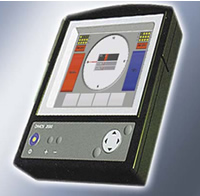 In Europe, The French Army has equipped its AMX-30B2 MBTs with decoy systems from developed by GIAT. The MUSS self protection system, produced by EADS is used on French Army AMX-10C armored vehicles. MUSS consists of an Eirel NG infrared jammer, which provides self-protection against a broad range of western and eastern block anti-tank utilizing the SACLOS guidance mode. Eirel is part of integrated self-defense systems as ADAS, MUSS and KBCM. (MUSS control panel is shown above. Eirel rotateable protection module shown on picture on the right.
In Europe, The French Army has equipped its AMX-30B2 MBTs with decoy systems from developed by GIAT. The MUSS self protection system, produced by EADS is used on French Army AMX-10C armored vehicles. MUSS consists of an Eirel NG infrared jammer, which provides self-protection against a broad range of western and eastern block anti-tank utilizing the SACLOS guidance mode. Eirel is part of integrated self-defense systems as ADAS, MUSS and KBCM. (MUSS control panel is shown above. Eirel rotateable protection module shown on picture on the right.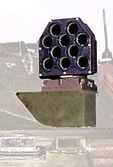
Thales Optronic Systems is also introducing laser warning defensive aid system for AFV Systems, named Cerberus. Typical layout uses four detector arrays and 16 launchers covering the front and rear; other configurations incorporate seven sets of sector arrays (6 in azimuth, one in elevation) to cover the entire hemisphere. The detectors are sensitive to all types of lasers, (400 – 1600 nm). The warning system triggers various alarms, such as “single pulse lasers” (rangefinders), “multi-pulse lasers” (target designation) and “overhead laser” (top attack). The system can automatically activate appropriate countermeasures from the 66/76mm grenade dischargers, such as forming a smoke screen over an arc of 180 degrees within two seconds.
Additional Parts of this article :


